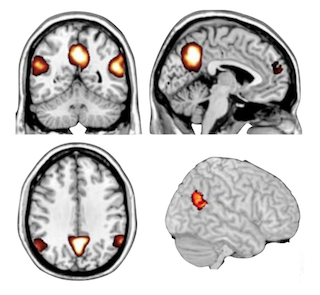
fMRI indicating areas of the brain used in considering someone's intentions; right and left TPJ, MPFC & precuneus. Image courtesy of Professor Rebecca Saxe.
Instructor(s)
Prof. Rebecca Saxe
MIT Course Number
9.46
As Taught In
Fall 2017
Level
Undergraduate
Course Description
Course Features
Course Description
How do we decide whether an action is morally wrong? How do we choose to do what is right? When and why do we punish wrong-doers? Moral behavior and moral evaluation are functions of the human brain. It is just becoming possible to use neuroscientific methods to understand how they work. This course will consider the mechanisms of morality as a question for neuroscientists.


